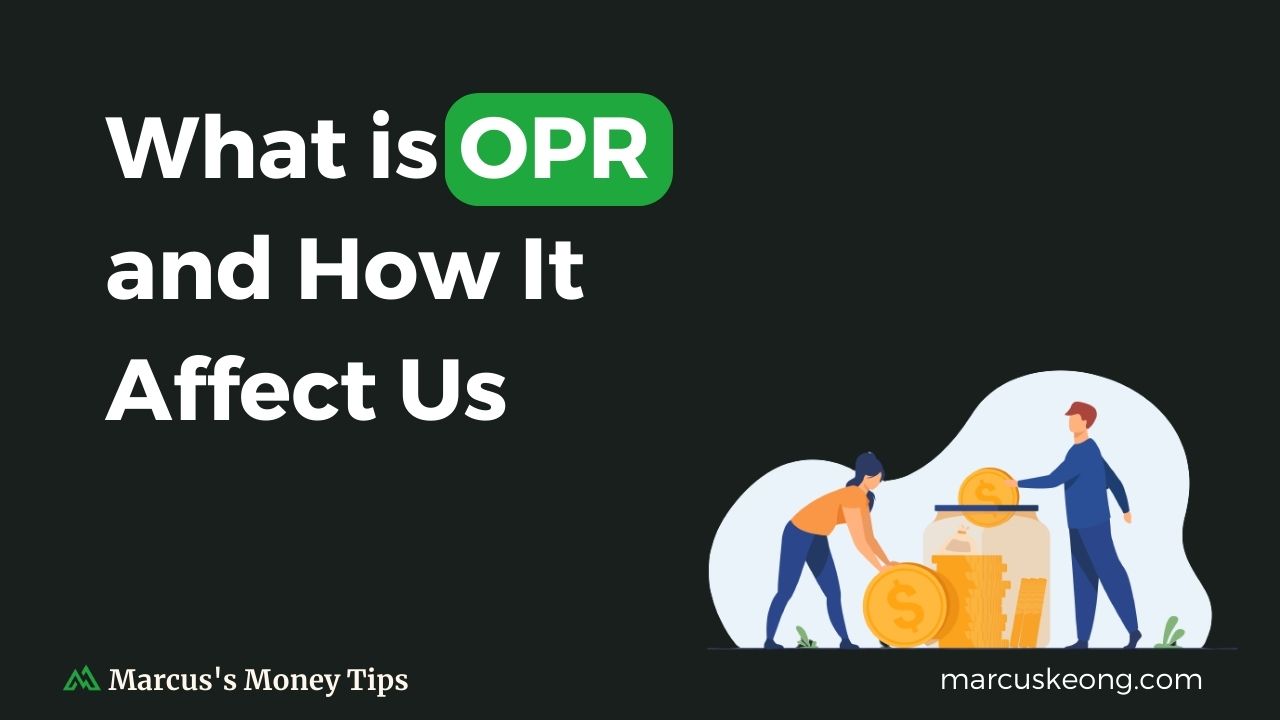Read Time: 3.5 minutes
On 3rd May, Bank Negara Malaysia raised our OPR by 25 basis points, from 2.75% to 3%. While this news raises many concerns, some people raise their eyebrows and wonder what the heck OPR means.
Mr. Money TV simplifies it by explaining if OPR rise is good or bad:
But let’s talk more about what OPR is, how it affects us and what we can do about it.
What is OPR
OPR stands for Overnight Policy Rate. It is the interest rate applied to the borrowings between banks.
To maintain enough cash for us to withdraw, banks sometimes need to borrow some money from another bank. And they will get charged with an interest rate, which is OPR.
Bank Negara Malaysia is the one that regulates OPR to ensure that it is at the right level to prevent long-term issues such as too many borrowings.
You may ask, is BNM one of the government agencies?
No, it is not.
You can read the thread below thread (in Malay) to understand how BNM works:
Why OPR is raised
The short answer is to slow down our country’s inflation.
To explain that, let us look at what is the effect of OPR rise:
- The return for fixed deposits will be higher.
- The interest charge for loans will be higher.
Let us look at the second point. When borrowing money becomes more expensive, it will discourage anyone from applying for a loan.
When there is less money to be borrowed, people will spend less and slow down the price increase for general items.
Eventually, this slows down the inflation as well. Of course, prices will still increase but at a slower pace.
Below shows the infographic by BNM on why they raised OPR to 3% in May 2023:

The Historical OPR Changes in Malaysia
To understand the “standard” OPR rate in Malaysia, let us take a look at the historical OPR rate in 10 years’ time:

As you can see, our OPR hovers at 3% to 3.25% before 2020. Today it is back to 3%, which is the same as pre-covid.
This means our economy is slowly recovering to the “normal” state, which is the time before covid hits us.
How OPR Adjustment Affects Us
1) Variable Rate Loans
Variable rate loan means the interest rate for the loan will change when OPR changes.
If you have loans with variable rates (usually house loans), you should always be prepared that your monthly payment will increase when there is an announcement of an OPR rise.
Personally, I always pay extra on my house loan. In my case, my monthly payment is around RM1.6k, but I am paying RM1.7k every month, an extra RM100.
In case OPR rise and my house loan monthly payment gets adjusted, I won’t feel any impact as I don’t have to increase my payment due to my extra payment.
If you are applying for a new loan with a variable rate, always have a mindset that the loan payment will not be fixed.
If the monthly payment for your new house loan is RM2k, you have to allocate RM2.2k to be safe.
2) Fixed Rate Loan
For fixed-rate loans such as car loans, OPR rate adjustment will not affect your existing loan payment.
But if you plan to apply for a fixed-rate loan, it will be better to do it earlier before the OPR rise. After the OPR increase, it will increase the new loan monthly payment as well.
Anyway, it is best to check with your loan provider to understand if your loan is using a fixed rate or a variable rate.
3) Fixed Deposit & Money Market Funds
If you are an avid investor in fixed deposits, then the OPR rise will be good news for you.
Upon the announcement, you will see banks start to offer a better return for fixed deposits.
You might ask, how about MMF? Will an OPR increase affect it?
Yes, it will.
In my previous newsletter, we learned that some MMF invest in fixed deposits as well.
So OPR increase may increase the return for MMF too. Happy news for investors.
Verdict
OPR rate change may seem to not impact our lives if we do not have loans. But if we understand how it works, we can make wise money decisions, such as taking advantage of better returns from fixed deposits and money market funds.
Here are some takeaways from this week’s newsletter
- Always prepare to pay extra on variable-rate loans.
- Apply for a fixed-rate loan when the OPR rate is lower.
- Invest in FD and MMF when the OPR rate is higher.
That’s all for this week’s newsletter. I hope you learn something from it.
Talk with you again next week.
Your Money Buddy,
Marcus
If you’re interested to know what financial tools I use, here are one of them that I use most of the time:
→ Versa – Where I invest my emergency fund for up to 4.0% return. Get free RM10 if you register a new account with my referral code “AL9JZJ9H”

I have a RM600k housing loan balance and same amount in FD. Would it be wiser to pay off the loan or continue with RM600k FD.
There’s no other financial commitments besides this loan.
Regards,much thanks for your valuable response
Hi Eve, which interest rate is higher? The house loan or the FD?
If house loan has a higher interest rate than FD, you may consider to use the FD money and pay off the loan. But I wouldn’t use up all the FD amount, maybe will keep 50k to 100k for emergency use.
If FD has a higher rate than house loan, then just keep the money in FD.